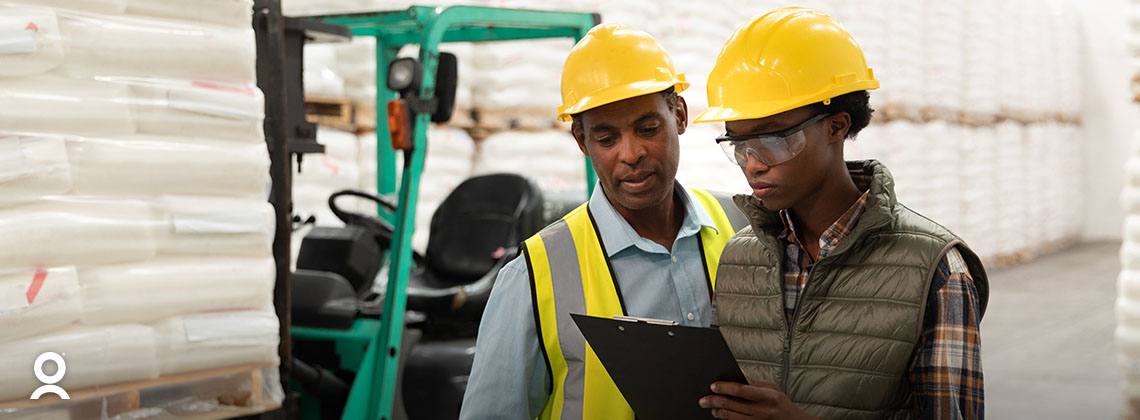How HR Leaders Are Creating Moments that Matter to Improve Employee Experience

Deskless workers make up 80 percent of the workforce,1 but only account for less than one percent of companies’ enterprise software spends. Throughout the COVID-19 pandemic, however, it has become clear that deskless workers are the essential workforce keeping the world running.
Moving forward, that new understanding of the value of the deskless worker needs to continue to be recognized by employers, who should be seeking to meet employee’s increasing expectations in order to attract and retain talent.
Read on for some key takeaways from HR Leaders’ recent webinar, How to Enhance the Employee Experience of Today’s Most Critical Worker: The Deskless Worker.
Who Are Deskless Workers and Why Do They Matter?
First, let’s dig into what “deskless worker” means beyond the literal sense.
“The frontline team, people that are working away on a sales floor, a manufacturing plant, driving a truck. That’s what we define as a deskless worker,” says Marc Gingras, WorkForce Software’s SVP, Employee Experience Strategy.
Not having a desk might not seem like a big deal, but people who work at desks traditionally have easier access to information. They have a computer to access email or intranet, and a phone to text or call colleagues and clients.
Deskless workers, meanwhile, tend to be at the bottom of the communication funnel, often receiving important information last and once it’s gone through corporate, regional or district managers, and then finally shared by on-duty managers. But that system can be unreliable—the nature of shift-based work means that all employees won’t be gathered together at one time to attend meetings, paper memos posted in break rooms often go unnoticed, and messages sent to personal emails or phones may go ignored outside of work hours.
It wasn’t until the pandemic forced workers who typically work at desks to work remotely that many noticed the communication gap created by missing out on watercooler talk or in-office conversations and the frustration that comes with being disconnected from the rest of the organization. In many ways, forced remote work has levelled the playing field between office workers and the frontline staff.
Now, especially as we move towards a future of hybrid work, it’s clear that the problems facing the deskless worker population need to be addressed in order to improve the employee experience for everyone.
How to Improve the Employee Experience for Your Entire Workforce
HR Leaders’ recent webinar provided fruitful discussion on ways to improve the employee experience for deskless workers. Here are some of the main takeaways:
1. Provide Tools and Technology to Assist Deskless Workers
Providing employees with the tools and technology to make their jobs easier is crucial to making sure they have a positive experience at work—and in the case of most deskless workers, that means going mobile. Making resources available to staff where they work means they don’t need to leave the floor to find information, ask for clarification, or communicate with their colleagues and managers.
2. Continue to Build Company Culture
Remote work during the pandemic made a lot of workers realize how difficult it can be to maintain a strong company culture when employees aren’t together in the same space. Going forward, it’s important to continue to engage all employees in a distributed workforce. If your workforce has grown accustomed to frequent virtual updates from the CEO or monthly virtual social events during the pandemic, keep that level of engagement going—and ensure that it is extended to the deskless members of your workforce.
3. Improve Communication
Communication is essential to creating a great employee experience. A centralized platform is key to ensuring that all work-related communication is organized and remains professional. Without a single source of truth (i.e., announcements from the CEO, updates from managers), employees may seek information from unverified platforms such as Facebook or WhatsApp, leading to misinformation and security issues.
4. Collect Real-Time Employee Sentiment
Multiple speakers on the panel endorsed collecting real-time sentiment from their employees, opting for weekly or monthly check-ins (with additional availability as needed) rather than relying on annual surveys. In addition to engaging employees more directly and more frequently, tools like instant mobile surveys improve the employee experience by allowing workers to voice concerns as they arise. When their voices are heard and their concerns are addressed in a timely manner, employees will be far more likely to remain loyal to their employer.
For discussions around these ideas, and additional suggestions for enhancing the employee experience for deskless workers, watch the complete webinar here.
Learn how WorkForce Experience can help your organization transform internal communications, simplify access to essential information, act on moments that matter most to your employees, and drive operational excellence.
1. Turlica, Chris. “Don’t Ignore The Deskless Workforce.” Forbes. April 21, 2020.
Subscribe to The WorkForce Blog
Learn the art and science of maintaining productive, happy, engaged employees.
Discover More
Embedding an ‘Eyes Wide Open’ Mindset Into HR Technology Selection
Gartner guides teams responsible for deciding on their organization’s next HR technology investment to set themselves up for success.
5 Workforce Management Secrets to Thrive in 2021 and Beyond
Download this eBook to learn the 5 secrets that will help your organization shift from surviving to thriving now and in the future and learn how the right workforce management solution can empower your initiatives.
Reshaping Workforce Management Strategies to Meet Growing Employee Expectations
See how evolving preferences and pivotal factors have led to a transformative shift in workforce expectations.



